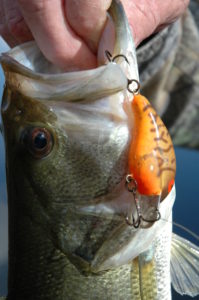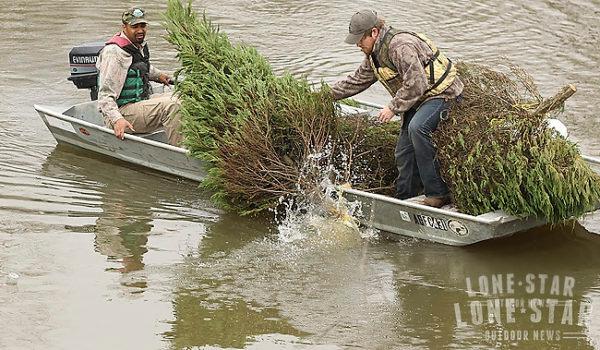Nearly everyone loves a real Christmas tree, savoring the look, the aroma, and general feeling of a “real Christmas.” However, once the holiday has passed, disposing of trees can be a problem. If you have one or more trees to dispose of and live near a fishing lake, pond, or river, that tree with the falling needles can create ideal cover for a host of minnows and other small creatures that serve as the base layer of the food chain. Make sure that you remove all decorations, especially ball hooks and “icicles.” No doubt the reflective nature of those silvery streamers will be ingested by fish and can kill them. Unless you are creating habitat in private ponds or waterways with ownership, it’s probably a good idea to check with local officials to avoid being cited with dumping or other ordinance violation.

Fish Gather Around
One of the best bass fishing areas in the Potomac River is a section where sections of an old bridge were dumped in the water. These huge pieces of concrete provide protection from currents and otherwise creates a near “reef” for fish. Likewise, when lakes in the south are created, the timber is often left standing so that it provides a home for fish of all sizes. Evergreen trees are particularly good because of their denseness. Insects and tiny minnows can hide in their protective bows while predator fish prowl the perimeter. Crappie are especially attracted to fallen trees and savvy anglers know to float a minnow near the ends of the sunken timber or work small jigs that lure the tasty fish from their secluded branches into more open water where they are more easily caught. Depending on the number of trees available, evergreens can create piles that extend to the surface, however, if this is your plan, be sure to place a buoy or other marker to alert boaters of the new obstacles in the water. Here’s a clip from the Lone Star Outdoor News explaining how their trees can be launched.
The trees at the parks are available for area fishermen to pick up and sink in nearby lakes to create fish habitats. Small fish eat the aquatic insects that find a home in the tree branches. The fish also use the trees as a hiding place. As a result, the fishing is improved around the “recycled trees” because more fish congregate in these areas.



















![The Best Deer Camp Chili [VIDEO] Deer Chili Ingredients, Tomatoes, Chili Spices](/wp-content/uploads/2015/10/Deer-Chili-Deer-Camp-Recipe-218x150.jpg)
![How to Call Elk Early in the Season [VIDEO]](/wp-content/uploads/2016/08/byers003-218x150.jpg)




![Idiots Disturb Hunter: How Would You Have Handled It? [VIDEO]](/wp-content/uploads/2015/10/DSC00110-e1474487693878-100x70.jpg)
![Albino Buck Shocked to Shed His Antlers [VIDEO]](/wp-content/uploads/2015/10/AlbinoDeer-100x70.jpg)